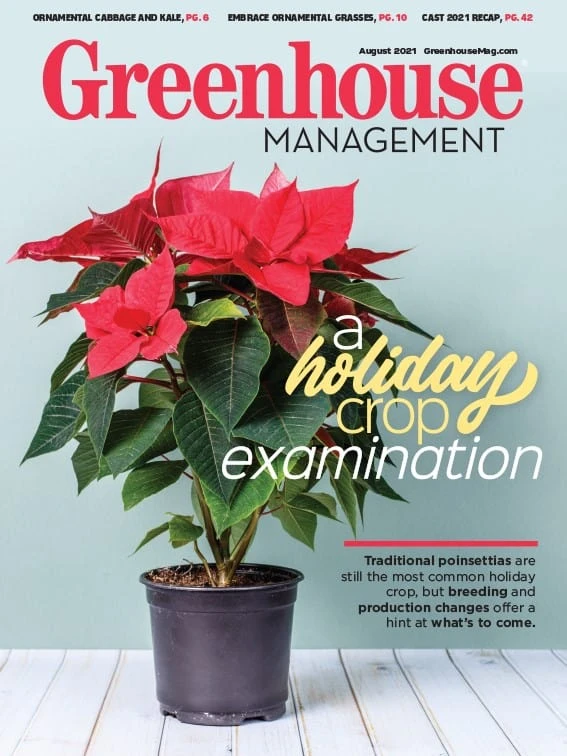
When pests are discovered in the greenhouse, they were likely reported by a scout.
The first thing you need to consider when you think about scouting is to come to grips with who’s actually going to do it. Some growers have full-time scouts, some have part-time scouts, but for most operations scouting is part of someone’s responsibilities — not an entire job description on its own.
“Don’t think you have to have a paid, titled, credentialed scout do the scouting,” says Timothy Malinich, horticulture educator in agriculture and natural resources with the Ohio State University Extension’s Erie County office. “Scouts can just be people that have been empowered to go out there and look for things, see those things and report them back to the people that will need to treat them.”
Scouts could be site managers. If a greenhouse has multiple locations, it could be the manager of each site. It could be all employees at the greenhouse. It could be the employees on the potting line or employees managing inventory in the shipping yard. In many cases, it’s the applicator.
Greenhouse managers can empower everyone in their organization to scout, but you need to make it part of the job description. You must give the people you are empowering to scout time to do the work and be flexible about when they do it.
You should also provide some basic training on what scouting entails. Though even without formal training, if an employee sees something that doesn’t look normal, they can report it and you can use it as a point of data.
Thomas DeHaas, an agriculture and natural resources educator at Ohio State University Extension’s Lake County office, says every employee is likely to have one of the most powerful scouting tools right in their pocket: the smartphone.
“They can take a picture and text somebody,” DeHaas says. “If you have a central person who gets that info, you’ve already improved your scouting program 100%.”
DeHaas suggests growers think outside the box to incentivize employees to scout in addition to their responsibilities. For instance, you could offer $1 for each picture sent that turns out to be a problem.
_fmt.png)
“If it’s worth doing, it’s worth paying for,” DeHaas says. “Giving people time to do it is going to cost you money, but it saves money, too.”
There are several financial and plant health benefits to a robust scouting program. Because your trained scout or scouts can find pests before they become a problem, you’re able to reduce pesticide inputs, preserve your beneficial insect supply, and reduce the chance of pesticide resistance.
Scouting tools
The tools of the trade can vary widely in price and effectiveness. If you ask a large amount of your employees to scout, you won’t outfit all of them with Canon Rebels and pricey magnifying lenses. But everyone should at least have the basics listed below. Here are some options:
Basic tools
Smartphone, loupe, pen and waterproof paper, pruners, marking tape, flags, acetone with cotton balls, hand sanitizer, map of greenhouse (to mark where pest was found), yellow sticky cards.
Midrange tools
Digital magnifier, EC/pH meter, clip-on lenses for smartphone (ex. CamKix), Hand-lens with 10x power and/or optivisor (headset with magnifying glass), Resource information such as pesticide labels, pictures and life cycles of key pests.
High-end tools
Field microscope, “real” camera (D-SLR style), laptop for image manipulation, clip-on lenses like olloclip.

Explore the August 2021 Issue
Check out more from this issue and find your next story to read.
Latest from Greenhouse Management
- North Carolina Nursery & Landscape Association announces new executive vice president
- Plant Development Services, Inc. unveils plant varieties debuting in 2025
- Promo kit available to celebrate first National Wave Day on May 3
- Applications now open for American Floral Endowment graduate scholarships
- Endless Summer Hydrangeas celebrates 20 years with community plantings
- Invest in silver
- Garden Center magazine announces dates for 2025 Garden Center Conference & Expo
- USDA launches $2 billion in aid for floriculture growers





